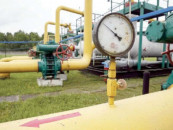Govt expects current account deficit to slow down to $12.5 billion
Endorses 6.2% economic growth target, 6% inflation rate for next fiscal year

Interior Minister Ahsan Iqbal PHOTO: REUTERS
The Annual Plan Coordination Committee (APCC) approved on Monday the macroeconomic framework for fiscal year 2018-19. The plan will now be tabled before the National Economic Council (NEC) - the constitutional body responsible for macroeconomic planning - for formal endorsement.
Prime Minister chairs the NEC meeting while the APCC huddle is headed by the planning minister.
For the next fiscal year 2018-19, the outgoing government has set the gross domestic product (GDP) growth target at 6.2% and inflation rate at 6%.
“The economic growth prospects are positive for 2018-19 on account of expected strong performance of agriculture, steady growth in the industrial sector and improved energy supply,” said the government’s Outlook for the next fiscal year.
“Our high point in the past five years is to increase the total size of economy from $215 billion in 2013 to $313 billion by the end of this fiscal year,” remarked Ahsan Iqbal, Minister for Planning and Development, while chairing the APCC meeting.
Currency: Rupee weakens against dollar
“Pakistan wants to be a trillion-dollar economy and for that purpose the country needs to grow at a pace of 6% to 8% per annum,” he added.

However, the balance of payments framework, approved by the APCC, appears to be over-optimistic as it has been built on the belief of reversal of the ongoing trend of exports and imports.
In first nine months of the outgoing fiscal year, exports grew at a pace of 13.1% and imports soared 15.7%. This resulted in a trade deficit of $27.3 billion, which was 17.3% higher than the previous fiscal year.
It seems that the planning ministry has ignored results of the first nine months while making projections for the remaining period of the current fiscal year and the next year.
The government has estimated total exports at $24.5 billion for 2017-18 while nine-month receipts stood at $17.1 billion.
Similarly, imports have been estimated at $53.1 billion for the full year whereas in nine months the import bill was $44.3 billion.
The trade deficit, which during the first nine months stood at $27.3 billion, has been projected at $28.6 billion for the full year.
Fiscal year 2018-19
The government has set the current account deficit target at 3.8% of GDP or $12.5 billion, according to the plan approved by the APCC.
It is significantly lower than the latest projections made by the International Monetary Fund (IMF), Asian Development Bank and World Bank.
These international financial institutions have forecast that the next fiscal year’s current account deficit will stand at 4.5% of GDP.
Protection of Economic Reforms Act: Change in law to bring down demand for US dollar
Macroeconomic targets for the next fiscal year showed that exports would grow at a double-digit pace, which will be almost double the pace of imports.
It has set the export target at $27.3 billion, up $2.8 billion or 11.5% compared to the revised estimate for the outgoing fiscal year. Imports have been projected to grow to $56.5 billion, up only $3.4 billion or 6.4%.
As a result, the government expects to keep the trade deficit restricted at $29.2 billion in the new fiscal year, which will be higher by only 2%.
With investments for the China-Pakistan Economic Corridor and better performance in the industrial sector, the government expects exports to gain momentum.
But it acknowledged that “concerted efforts are required to enhance the quality of export (goods), diversify the product range and look for new markets”.
The IMF recently said the CPEC’s positive impact on exports had yet to be determined.
Although the government has taken into consideration the CPEC’s positive impact on exports, it has not fully counted it in imports and current account deficit.
It has set the investment-to-GDP ratio at 17.2% and national savings rate at 13.3% for 2018-19.
In its Annual Plan for the next fiscal year, the government noted that “high fiscal and current account deficits in 2017-18 may pose a challenge on the external front” in 2018-19.
The current account deficit remained a problem, but “we have largely controlled it due to the measures taken by the government including depreciation of the rupee”, said Dr Miftah Ismail, Adviser to the Prime Minister on Finance, while speaking at a seminar on Monday.
Published in The Express Tribune, April 17th, 2018.
Like Business on Facebook, follow @TribuneBiz on Twitter to stay informed and join in the conversation.



















COMMENTS
Comments are moderated and generally will be posted if they are on-topic and not abusive.
For more information, please see our Comments FAQ